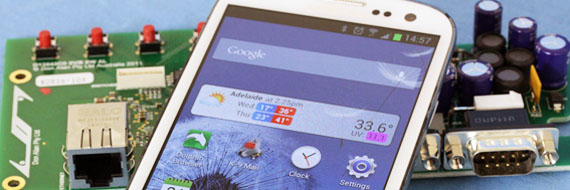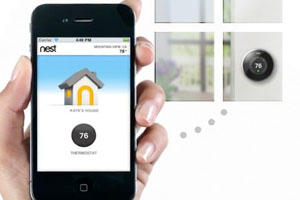
It has happened really suddenly. For the last three years we have been asking customers if they want these features and it was just seen as a step too radical. But in the last six months nearly every conversation with customers has included IP connection. Even on sub $100 units. With such explosive interest you have to wonder if it is a fad. But it just makes too much sense to be a fad.
Using mobile smart phones, iPhones, wireless Android Internet tablets, or iPads as home automation user interfaces will be pervasive and so common that it is no longer an ‘optional extra’ It’s on the must have list. See how it works here.
Smart home automation and the art of connecting everything has become one of the six gadget trends at the International Consumer Electronics Show (CES) 2013 which was closed not long ago in Las Vegas, according to a CNN report.
“There is very little in your home that won’t be connected to the Internet if electronics manufacturers have their say. Cheap sensors are making it easy to turn devices you’ve used without much thought into “smart” devices that do a bit of the thinking for you. This year, smartphones will be on a bit of a power trip, getting apps to control home security, unlock doors, conserve energy and tinker with lighting.” (Source: CNN)
In a world of extreme standardisation across home appliances, adding Internet (IP) connectivity opens up the opportunity for customer engagement and differentiation. And your home appliances will increasingly support TCP/IP Internet connection, both for integration, and for local and remote user access via consumer phones and PCs.
The Nest Learning Thermostat is a good illustration.
Once installed in your home, the Nest thermostat learns your personal schedule and will automatically turn down the heating or cooling system while you’re away, but ensure that while you’re home, the desired temperature is maintained. However, you can remotely adjust or re-program the device using your iPhone or iPad, at anytime, anywhere. For instance, you can turn up the heat on your way when you come home early.
According to Nest Labs, the creators of the device, the average savings during its first three years of use in a single family home will be $520.00.
I think a lot of companies are going to be caught out and their competition getting the jump on them by offering direct connect IP products before they have even thought about it.
The tragedy of being caught out in this way is several folds. Quite apart from missing the chance to get the jump on their competitors there is a lot of work to be done get appliances IP enabled in a way that works for the customer. Adding the IP connection to the device is one thing, making it useful for the customer is another. Then you need to make it so that people who think an alarm clock is all too technical can use it without limiting the scope for full on techno geeks to make it do magic – and you need to do this without extending your customer support team.
Using a 3rd party product as a bridge to provide IP services to legacy appliances is a poor second choice in most situations. It means tying yourself to the community and products associated with that 3rd party bridge. But the truth is the bridge market is going to dry up into some specialised niches before long because the direct connect trend will render it obsolete. Those products requiring bridges will be playing from behind.
The message is that if this is that if you are not already well down the path of having direct IP connection to your company’s products you are probably already behind the game.


Leave a Reply